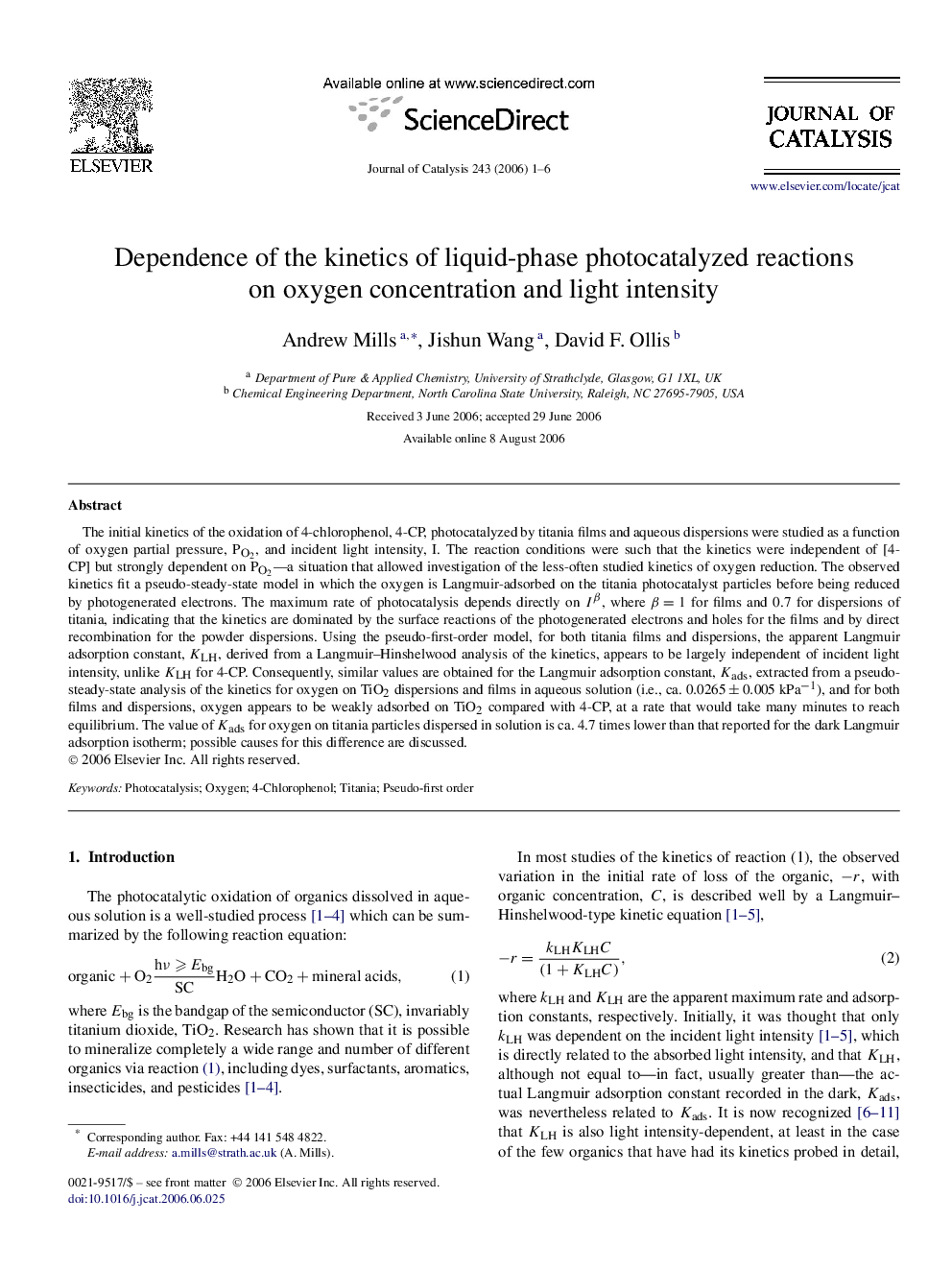| Article ID | Journal | Published Year | Pages | File Type |
|---|---|---|---|---|
| 63432 | Journal of Catalysis | 2006 | 6 Pages |
The initial kinetics of the oxidation of 4-chlorophenol, 4-CP, photocatalyzed by titania films and aqueous dispersions were studied as a function of oxygen partial pressure, PO2, and incident light intensity, I. The reaction conditions were such that the kinetics were independent of [4-CP] but strongly dependent on PO2—a situation that allowed investigation of the less-often studied kinetics of oxygen reduction. The observed kinetics fit a pseudo-steady-state model in which the oxygen is Langmuir-adsorbed on the titania photocatalyst particles before being reduced by photogenerated electrons. The maximum rate of photocatalysis depends directly on IβIβ, where β=1β=1 for films and 0.7 for dispersions of titania, indicating that the kinetics are dominated by the surface reactions of the photogenerated electrons and holes for the films and by direct recombination for the powder dispersions. Using the pseudo-first-order model, for both titania films and dispersions, the apparent Langmuir adsorption constant, KLHKLH, derived from a Langmuir–Hinshelwood analysis of the kinetics, appears to be largely independent of incident light intensity, unlike KLHKLH for 4-CP. Consequently, similar values are obtained for the Langmuir adsorption constant, KadsKads, extracted from a pseudo-steady-state analysis of the kinetics for oxygen on TiO2 dispersions and films in aqueous solution (i.e., ca. 0.0265±0.005kPa−1), and for both films and dispersions, oxygen appears to be weakly adsorbed on TiO2 compared with 4-CP, at a rate that would take many minutes to reach equilibrium. The value of KadsKads for oxygen on titania particles dispersed in solution is ca. 4.7 times lower than that reported for the dark Langmuir adsorption isotherm; possible causes for this difference are discussed.
